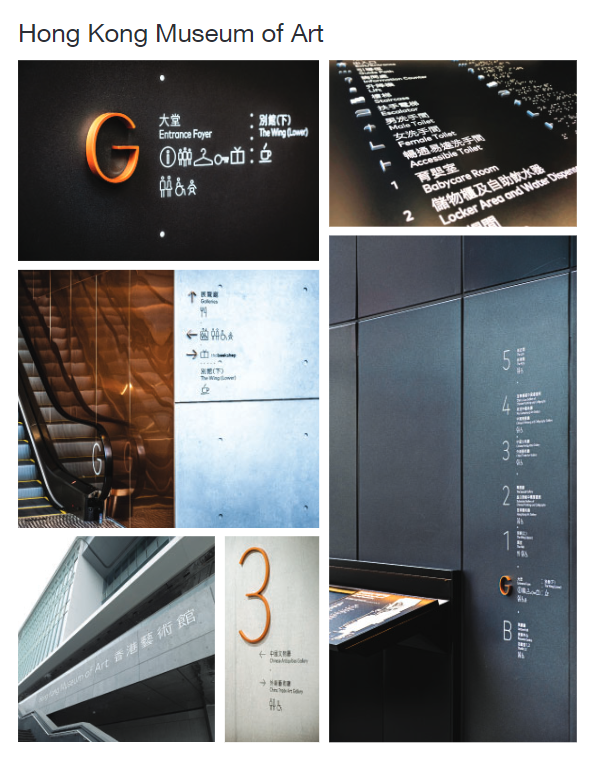Atelier Pacific
Project Name: Hong Kong Museum of Art, Hong Kong
Client: Hong Kong Museum of Art (Hong Kong Government Leisure & Cultural Services Department)
Sector: Museums & Galleries
Location: Tsim Sha Tsui waterfront, Hong Kong
The role: Wayfinding strategy, exterior & interior signage designer – included strategic advice and guidance, signage planning and design from initial concept through to implementation and delivery on site.
The brief: Established in 1962, the Hong Kong Museum of Art (HKMoA) was originally housed in the City Hall, and moved to its present purpose-built premises in Tsim Sha Tsui in 1991. The HKMoA features more than 15,000 art objects including calligraphy, antique Chinese treasures, paintings of historical significance and works by local artists. Beginning August 2015, the museum closed for four years to enable a major renovation project. The expansion provided a new annex block with a double-height gallery of 9m to accommodate monumental contemporary artworks, and also included two high-ceiling galleries at the extended roof level; increasing the total exhibition area from approx. 7,000m² to approx. 10,000m².
As one of the region’s leading Signage Design studios, Atelier Pacific were directly invited by the Hong Kong Government representative to provide a comprehensive design solution that would help re-establish the museum as one of the world’s custodians of Chinese culture.
Outcome: Working closely with the Museum Management (LCSD), Architects (ASD) and Branding teams to understand their vision for the revitalised museum, Atelier Pacific delivered a ‘design & build’ signage project (together with Asia Sign), which reflects the new character of the museum; contemporary, minimalist and with dynamic feature walls in copper and fair-faced concrete. Hence, the signage styling is sensitive to the museum materials and finishes, with carefully considered clean typographic direct applications of suitable scaling and contrasting colours; respectfully balancing subtlety with legibility. At key locations, tactile maps and signs ensure universal accessibility for relevant user groups.
Case study submitted by: Atelier Pacific.

